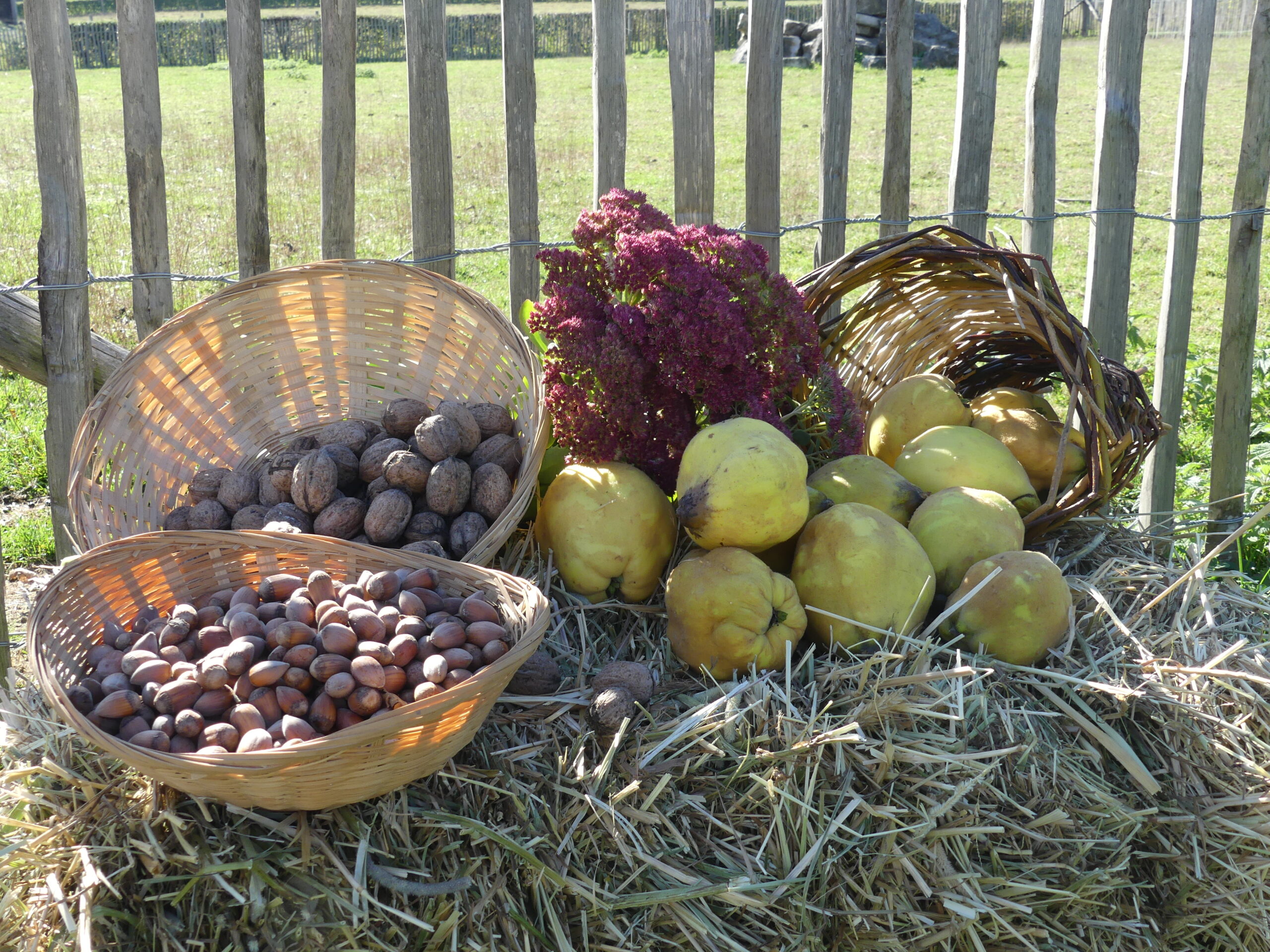Food plants
In ancient times, plants were mainly grown close to where they were consumed. Every villa had a vegetable garden and orchard, which provided the inhabitants with most of their vegetables and fruit. Pliny the Elder tells us about food plants, which are grouped according to the part of the plant that is eaten:
- “Root” vegetables, such as turnips and carrots
- “Salad” vegetables, eaten raw, such as lettuce
- “Spinach” vegetables, the leaves of which are cooked, such as cabbage
- “Young shoots” vegetables, eaten like asparagus, such as hops
- “Fruit” vegetables such as cucumber, calabash and melon
- “Seed” vegetables such as broad beans and lentils
- “Artichoke” vegetables, whose flower buds are eaten, such as cardoon.
To reduce the risk of pests, different vegetables are combined according to their respective affinities. For example, mint is sown between cabbages to protect them from insect attack.
In addition to cultivated vegetables, the Gallo-Romans harvested a wide variety of edible wild plants from the countryside to supplement their diet. Certain food products were also traded and could be bought throughout the Roman Empire, such as dates and olives.
Author: Jean-Luc Mulkens



Illustrations:
Associations of vegetables in Malagne’s kitchen garden © Malagne, Archéoparc de Rochefort
Melon in the kitchen garden © Malagne, Archéoparc de Rochefort
Autumn fruit © Malagne, Archéoparc de Rochefort
The Gallo-Romans mushrooms
The Romans did eat mushrooms, the best known of which were the Caesar’s mushroom (only eaten by emperors) and the truffle, which was also appreciated by the aristocracy; two mushrooms of fairly high taste quality.
Other mushrooms eaten by the Romans are just as popular today, such as the Cèpe de Bordeaux.
In addition to reliable and well-known species, the Romans relied on the colour of the mushrooms or their appearance when cooked to ensure that they were safe to eat.
In addition to edible mushrooms, there were also mushrooms that were used for poisoning or healing purposes, such as Amanita phalloides (also known as Death Cap), the deadly mushroom used by Agrippina to murder the emperor Claudius and make way for her son Neron; or amanita muscaria (also known as fly agaric), which is said to have been used by Celtic healers.
As well as gathering mushrooms in the woods, it would appear that the Romans had mastered the cultivation of mushrooms, such as button mushrooms and the evergreen pholiota.
Almost all mushrooms were known as Bolets. Since then, we have known that boletes are a very special family, with their own specific characteristics.
Fortunately, today, scientific knowledge and technological advances are perfecting the study of mushrooms. This means we can now go mushroom picking with greater peace of mind, recognising specimens and avoiding mushrooms that are unsuitable for consumption.

Recent Comments